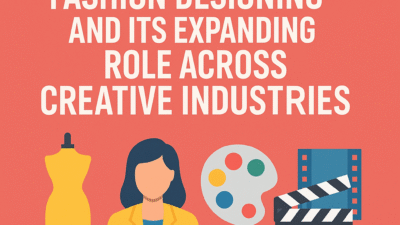We live in a world where we don’t just use technology—we experience it. Think about the last app you downloaded. Did it load quickly? Was it easy to navigate? Did it feel right to use? If the answer is yes, chances are a skilled UX/UI designer helped make that possible.
Today, companies aren’t just competing on features—they’re competing on experience. This shift is fueling demand for professionals trained through a solid UI UX design course who can design with both empathy and logic.
Let’s unpack what makes this field so vital—and why so many creative minds are choosing this as their long-term career path.
What is UI/UX Design, Really?
A lot of people think UI/UX design is just about “making things look pretty.” But it’s far deeper than that.
- UX (User Experience) design focuses on the structure and flow of digital experiences—how users interact with a product, and whether those interactions are smooth, logical, and satisfying.
- UI (User Interface) design is about crafting the visual elements—the buttons, fonts, colors, and transitions that users see and touch.
Together, they ensure that a product is not only functional but enjoyable to use. It’s part psychology, part storytelling, and part digital craftsmanship.
Why Are More Students Choosing UX Design?
As job roles evolve, students aren’t just looking for conventional degrees—they want careers that feel meaningful, future-focused, and creative.
Here’s why UX/UI ticks all those boxes:
- It blends tech and creativity.
- It’s applicable across industries: from e-commerce to healthcare.
- It solves real user problems.
- It offers strong freelance and remote work opportunities.
- It has clear career progression—entry-level to leadership.
For students who are visual thinkers, love patterns, or find themselves saying, “This app could be better,” a UX design course in Delhi or any other design hub is an ideal place to begin.
Learning UX Design in Delhi: What’s the Advantage?
Delhi isn’t just a city—it’s a buzzing ecosystem of startups, design studios, creative agencies, and digital-first companies. That makes it a smart location to learn and practice UX design.
By taking a UX design course in Delhi, students often benefit from:
- Proximity to active design communities
- Access to real-world projects with local clients
- Exposure to cultural diversity, helping build more inclusive designs
- Workshops, meetups, and design festivals that fuel continuous learning
In short, Delhi helps students stay inspired and connected to the design pulse of the country.
What Does a UI UX Design Course Teach You?
Unlike software engineering or traditional design courses, a UI UX design course balances logic with empathy. Here’s what students typically learn:
- User Research Techniques – Interviews, surveys, journey mapping
- Information Architecture – Organizing content logically
- Wireframing and Prototyping – Low-fidelity sketches to high-fidelity designs
- Interaction Design – Animations, transitions, micro-interactions
- Design Tools – Mastery of Figma, Adobe XD, and usability testing software
- Accessibility Principles – Designing for all users, including those with disabilities
More importantly, these courses help students shift their mindset—from designing for themselves to designing for real people with real needs.
Taking It Further: Should You Pursue a Masters in UI UX Design?
If you already have a design or tech background, a masters in UI UX design can be a great way to specialize and gain an edge in the competitive landscape.
At the master’s level, the learning goes deeper:
- Design Strategy and Systems Thinking
- Design for Emerging Tech (AR/VR, voice UI, wearables)
- User Psychology and Advanced Research Methods
- Design Leadership and Ethics
A masters in UI UX design isn’t just about becoming a better designer—it prepares you to lead teams, influence digital strategy, and shape experiences at scale.
Career Paths After UX/UI Training
The beauty of UX/UI design is that it opens multiple career doors. Some of the popular roles include:
- UX Designer / UI Designer
- Interaction Designer
- Product Designer
- UX Researcher
- Usability Analyst
- Content Strategist
- Accessibility Consultant
Whether you prefer hands-on design or data-driven decision-making, there’s space for every kind of thinker in this field.
The Human Side of Design
UX/UI isn’t just about pushing pixels. It’s about empathy. About understanding the daily challenges users face—and solving them with clarity and creativity.
A small change in button placement can reduce confusion for thousands of users. An improved onboarding flow can help someone access mental health services more easily. That’s the kind of real-world impact UX design makes.
And that’s what makes it a career worth considering.
Final Words: It’s Not Just a Course. It’s a Way of Thinking.
Whether you’re stepping into design for the first time or building on an existing foundation, learning UX/UI is like rewiring how you see the world. Every interaction becomes a design challenge waiting to be solved.
A thoughtfully structured UI UX design course, especially in a creatively charged city like Delhi, can give you the tools, language, and mindset to become not just a designer—but a thoughtful problem-solver.
And if you’re ready to lead, innovate, and rethink the way humans interact with tech, then a masters in UI UX design could be your next powerful step forward.



